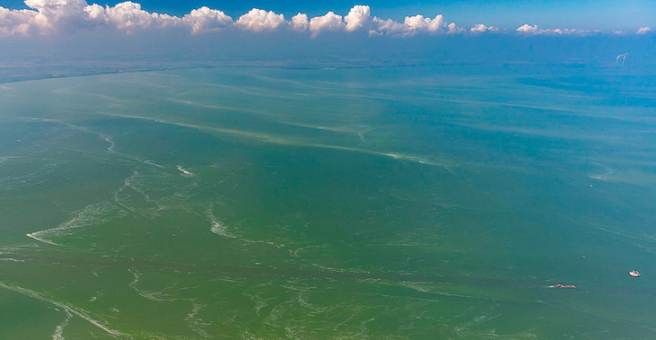The Explainer:
What causes algal blooms, and how we can stop them
By for The Conversation
[dropcap]O[/dropcap]utbreaks of algae have killed up to a million fish in the Murray Darling Basin over the last two weeks. The phenomena of “algae blooms”, when the population of algae in a river rapidly grows and dies, can be devastating to local wildlife, ecosystems and people. But what are algae blooms? What causes them, and can we prevent them?

NOAA image.
Microscopic algae are fundamental to life on earth. These tiny plants provide the fuel that drives marine and freshwater foodwebs, and via photosynthesis, they gobble up carbon dioxide to help counteract emissions, and provide us with oxygen to breathe. Besides rivers, streams, lakes, estuaries and the coast, they can also be found in diverse environments such as snow, soil, and in corals.
Fueling the bloom
But when humans channel agricultural run-off, sewerage and stormwater discharge into waterways, we dramatically increase the amount of nutrients such as nitrogen and phosphorus. This creates an imbalance, because some microscopic algae are supremely effective at mopping up nutrients and can grow very quickly, dividing up to once a day and quickly overtaking other species. The result is an algal bloom.
So why don’t we have algal blooms all the time? This is because algae don’t just require nutrients to grow. Like any plant, factors such as temperature and light availability are also important in determining how quickly algae grow and whether they form blooms. Blooms also need slow moving or still water to become established.






